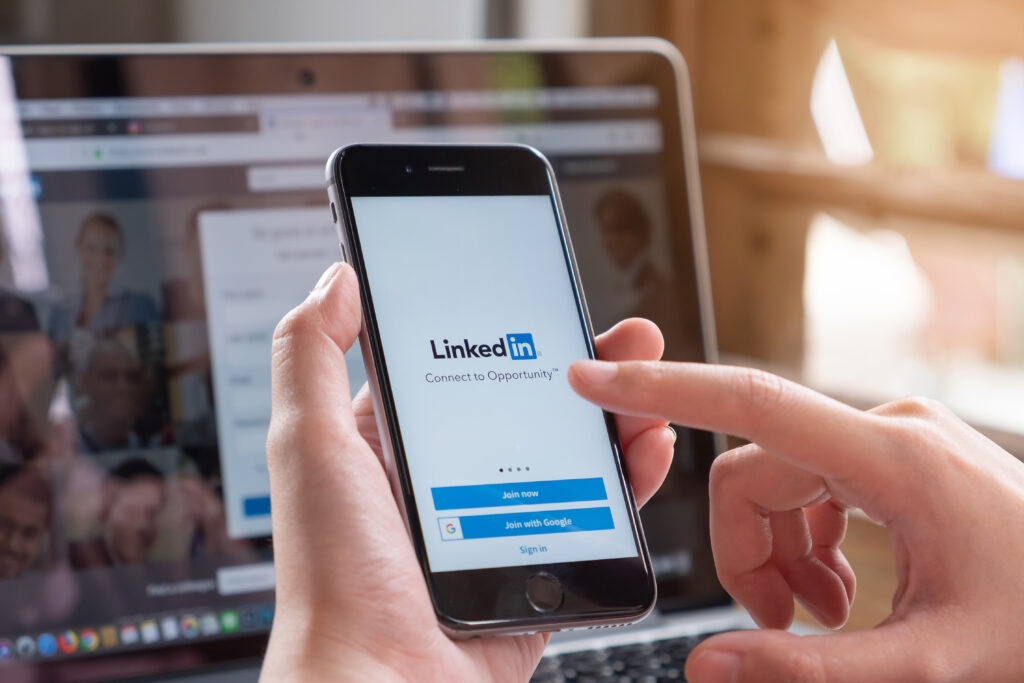L'article
1. No, social media are not (only) promotion channels.
Sales cycles can be long in the B2B sector, not least because of the complexity of the solutions on offer and the number of people involved in the decision-making process. Social networks, particularly LinkedIn, can be used to multiply the number of micro-interactions to give the process a little boost.
What exactly are micro-interactions? These are small, often subtle actions that help to maintain a dialogue and a level of engagement with prospects and customers. Here are a few examples:
- Comment on a post by a prospect or customer to add value, constructive criticism, expert opinion, etc. You’ll be demonstrating your expertise and knowledge of your business sector and chosen field while improving your visibility (both personal and corporate) ;
- Share articles or studies: if you come across content that might be useful or interesting to a prospect or customer, sharing it directly with them can help strengthen your relationship and position your company as a valuable resource. Better still, if you produce content of this kind yourself, you’ll be boosting your Thought Leader profile and preparing the ground for future sales actions ;
- Take part in group discussions: LinkedIn is full of groups focusing on specific sectors or subjects. Participate in these discussions to position yourself as an expert in your field and build relationships with potential prospects ;
- Send personalised messages: a simple message such as congratulating a customer on an achievement or asking for feedback on a recent interaction with your product can help keep the dialogue open and deepen the relationship.
2. On LinkedIn, we don’t just work for immediate sales
Many B2B companies see social networks as a channel for disseminating their marketing messages, no doubt backed up by a figure put out by IBM’s VP of Global Sales Center Excellence: 92% of B2B purchasing decisions are influenced by social networks. But this figure needs to be put into perspective by another: according to a study by Ehrenberg-Bass on behalf of the LinkedIn Institute, 95% of your target audience is not ready to buy at the “M” moment. We’ll explain…

- On average, companies change suppliers (communication, web, software, legal) about every 5 years;
- Logically, only 20% of companies looking for a service provider are on the market over the course of a year, and 5% over the course of a quarter;
- This means that 95% of the remaining customers are not necessarily interested in your services at time “M”, even if they fall within your target.
This observation argues in favour of actions that are halfway between branding and social selling, where we seek to position and anchor the brand in the minds of these prospects who fall within the target but who will not have a real need for it for several weeks, months or years.
3. Ignoring or tinkering with visuals: a strategic mistake
Visuals boost engagement, it’s as simple as that. A study carried out by Skyward showed that content accompanied by relevant images on social networks gets 94% more views, likes and comments than strictly text-based content.
Even the “purists”, who work in ultra-technical and rigorous business sectors, need to get on board. To overlook the ‘entertaining’ dimension of the buying journey is to forget that 75% of purchasing decisions are made by millennials and professionals from Generation Z, who have been immersed in digital technology. According to a LinkedIn x Edelman study, 87% say that content can be both easy to consume and intellectually rigorous. So get to work on your infographics, carousels and videos!
4. Not following up for fear of being pushy: a significant missed opportunity

The balance between “persistence” and “intrusiveness” is a constant challenge. Many people hesitate to follow up on a prospect for fear of being perceived as too insistent or even intrusive. However, this reluctance can hamper the effectiveness of the sales process and generate a huge loss of revenue.
In reality, most B2B purchasing decisions are not made on the spur of the moment. They require several interactions and commitments, often over an extended period.
Well-planned and tactfully executed follow-ups can therefore play a crucial role in keeping prospects engaged. Here are a few tips on how to follow up effectively without being too insistent:
- Customize your follow-ups: Nothing is more off-putting than a generic follow-up message. Make sure each follow-up is tailored to the specific needs and interests of the prospect. Use the information available on their social media profiles to understand their interests and guide your approach ;
- Provide value: Every interaction, including follow-ups, should bring value to the prospect. Informative content, relevant case studies, updates on your product or service… provide at least one new piece of information ;
- Respect the timing: The timing of the follow-up is crucial. Instead of following up immediately after an interaction, give the prospect time to process the information. Also, avoid following up during busy periods, such as the beginning of the workweek or after holidays ;
- Use engagement signals: The prospect’s actions, such as liking or commenting on your content, can serve as signals to plan your follow-ups ;
- Plan the ‘end’ of follow-ups: If you don’t receive responses after a few follow-ups, accept that your prospect may not have a current need. Announce that this is your ‘final follow-up’ and thank your contact for reading and/or giving you their time